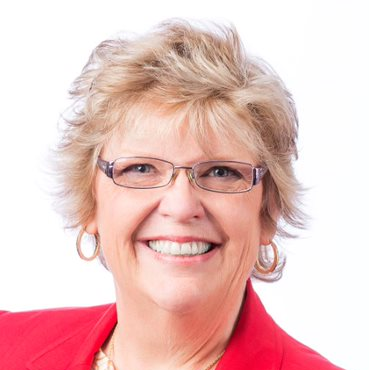Across the United States, nearly 1,400 healthcare facilities are designated as Critical Access Hospitals (CAHs) by the Centers for Medicare & Medicaid Services. These small hospitals, which each have less than 25 inpatient beds, play a crucial role in caring for people who live in rural areas. But their remote locations and lack of resources compared to larger hospitals means they also face a unique set of challenges.
These differences become especially clear when one considers a new electronic health record (EHR) system. In this blog post, we’ll take a look at the unique EHR challenges of rural CAHs. We’d also like to share some tips on how you can choose the right EHR system to meet the needs of patients and providers.
CHALLENGES THAT RURAL AND CRITICAL ACCESS HOSPITALS FACE:
- Resource constraints. One of the biggest challenges facing rural and CAHs is a lack of resources compared to larger hospitals and health systems. Most have limited budgets and fewer staff members to help get the job done. This makes planning for a successful EHR implementation especially important, because it’s imperative that the project finishes on-budget without increasing the workload of your already overtaxed team.
- Smaller financial reserves. When implementing a new EHR system, it’s common for hospitals to see a temporary dip in revenue as billing, claims processing, and reimbursement workflows transition to the new system. This can create cash flow challenges for any hospital. But at a CAH, smaller financial reserves mean there’s much less margin for error. To minimize disruptions to your hospital’s revenue cycle, it’s critical that billing and coding systems are ready for the EHR go-live.
- Unique reporting and billing requirements. Because CMS offers financial incentives to assist Critical Access Hospitals, these rural facilities operate under a unique set of guidelines, as well as billing and reporting requirements. To comply, the new EHR system must be built to address those needs.
- Limited infrastructure. In addition to managing limited staff and budgets, Critical Access Hospitals typically have less infrastructure to support the implementation of a new EHR system. This can include outdated equipment, slower network speeds, limited WiFi capabilities and less computers available to train staff.
WHAT EHR FEATURES ARE IMPORTANT FOR RURAL CRITICAL ACCESS HOSPITALS?
- Specialized workflows. When implementing a new EHR system, Critical Access Hospitals need routines that accommodate their unique processes. For example, many CAHs use swing beds that allow billing for both acute care and post-acute services. This necessitates EHR registration, documentation, billing, and discharge routines designed especially for this type of bed conversion.
- Billing and coding specific to CAHs. To help Critical Access Hospitals provide high-quality care to patients in rural areas, CMS offers a number of incentives related to reimbursements, staffing, and capital improvements. The program is designed to improve healthcare access and reduce the financial vulnerability of rural hospitals. But operationally, it also means that rural hospitals often operate by a different set of rules than larger hospitals. Your new EHR system must be built with these differences in mind to ensure that billing and coding can be performed appropriately.
- Thorough reporting. Critical Access Hospitals are also required to comply with a different set of reporting requirements than larger hospitals. To streamline reporting, an EHR system should be able to seamlessly share the necessary information with all relevant state and regulatory agencies.
HOW DO YOU SELECT THE RIGHT EHR FOR A RURAL HOSPITAL?
Here are some tips to help you choose the right solution to meet your needs and budget:
- Get leadership buy-in. Strong governance and executive leadership commitment is essential for a successful EHR implementation. This is especially true for small CAHs, where staff may be resistant to significant changes in systems and processes. Establishing a governance team early will ensure the voices of key stakeholders are represented – and create internal champions that can aid in the implementation and change management process.
- Ask for in-depth demos. Never commit to selecting an EHR vendor without asking for demonstrations performed against scripted scenarios that are unique to a CAH environment, such as swing bed conversions. In addition to assessing how an EHR system will meet the needs of your patients, you can also gain an understanding of how well a vendor understands the patient journey at Critical Access Hospitals.
- Check references. When considering a new EHR vendor, always ask for references from other CAHs. Then, make the time to call each reference – or take a small team on a site visit. You may be surprised at how much insight can be gained by simply checking the references provided by a vendor.
- Review the fine print. The cost of a new EHR solution can vary drastically based on your needs. Sometimes, a vendor will quote a basic level of service to meet the budget of a small CAH – without fully explaining the functionality that is or isn’t included. To ensure the system you purchase aligns with your expectations, you should always carefully review the contract and ask detailed questions in advance.
The process of selecting and implementing a new EHR system can be stressful and overwhelming. That’s why it can be useful to call in an expert for help. At HealthNET Systems Consulting, we’ve developed a proven process for rural hospital EHR vendor selection. Our team of experts can help identify your unique EHR needs, then develop a customized methodology to ensure you make the right decision for your organization.
We hope this quick overview has been helpful in addressing some of your questions. If your organization is considering a new EHR system and would like some guidance, don’t hesitate to contact the HealthNET team. We’d be happy to explain our vendor selection process, and discuss how we can help your team select and even implement a new EHR.
Blog Post Authors:

Joy Bauer, Vice President
HealthNET Consulting

